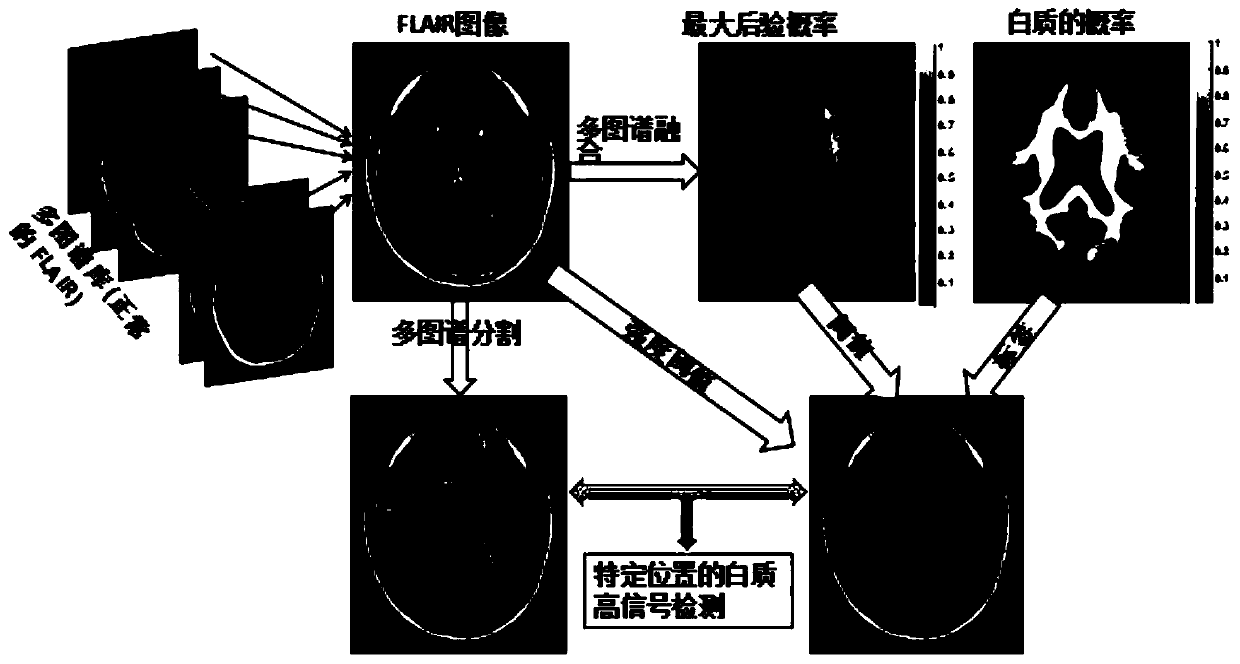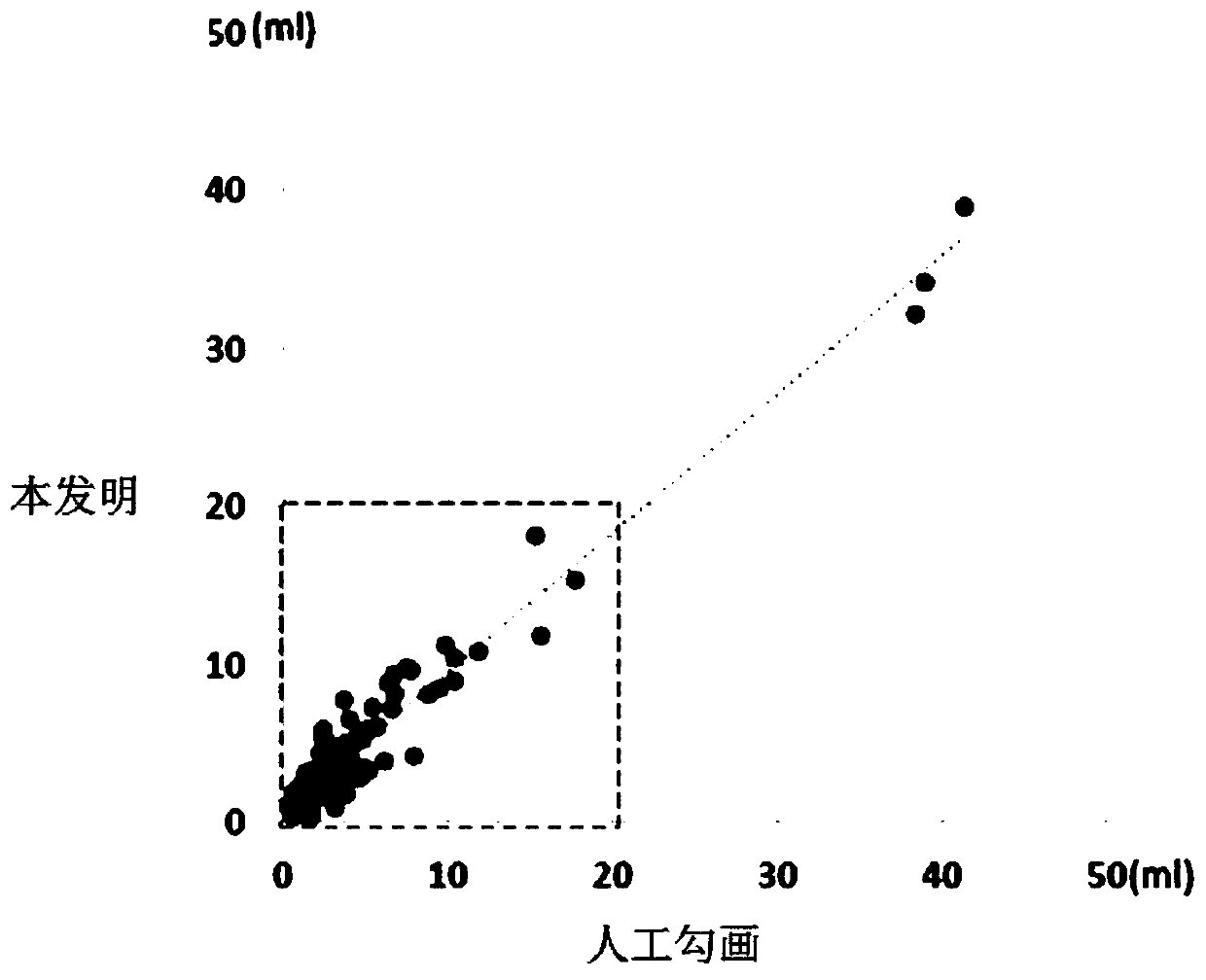A brain white matter high signal detection and positioning method based on multiple maps
A technology of signal detection and positioning method, which is applied in the field of detection and positioning based on multi-atlas, can solve the problem of automatically measuring the high signal load of white matter, and achieve the effect of good detection accuracy and strong robustness
- Summary
- Abstract
- Description
- Claims
- Application Information
AI Technical Summary
Problems solved by technology
Method used
Image
Examples
Embodiment
[0061] The above multi-atlas-based white matter hyperintensity detection and localization method was tested on the FLAIR data of 135 elderly subjects who were cognitively normal (n=113) or had mild cognitive impairment (n=113) twenty two). The FLAIR data of 15 cognitively normal individuals were selected as maps, and the remaining 120 were used for algorithm evaluation and analysis. Such as figure 1 As shown, the FLAIR atlas data of 15 individual subjects (only some subjects are shown in the figure) have different degrees of brain atrophy anatomical characteristics. For the specific method, refer to the above step 1, which will not be repeated here, and only the specific parameters here will be introduced below. The MRI scan was performed with a Philips Achieva 3.0T scanner; the FLAIR data was obtained using a multilayer fast spin-echo sequence, and the inversion recovery pulse inversion time (TI) / echo time (TE) / repetition time (TR) = 2800 / 100 / 11000ms, field of view (FOV) ...
PUM
 Login to View More
Login to View More Abstract
Description
Claims
Application Information
 Login to View More
Login to View More - R&D
- Intellectual Property
- Life Sciences
- Materials
- Tech Scout
- Unparalleled Data Quality
- Higher Quality Content
- 60% Fewer Hallucinations
Browse by: Latest US Patents, China's latest patents, Technical Efficacy Thesaurus, Application Domain, Technology Topic, Popular Technical Reports.
© 2025 PatSnap. All rights reserved.Legal|Privacy policy|Modern Slavery Act Transparency Statement|Sitemap|About US| Contact US: help@patsnap.com



